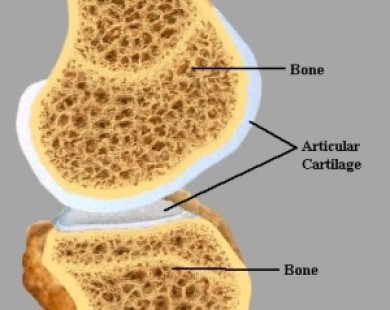What is Articular Cartilage Composed Of

Articular cartilage is one of four types of cartilages that are found in the human body. Other three are Hyaline Cartilage, Elastic Cartilage, Fibroelastic Cartilage and Fibrocartilage. All these cartilages are found around the joints areas and around bones in other parts of the body. They are just tissues, with no blood vessels or nerves connected to them. They are more flexible and stronger than bones. The main function of cartilages is to protect human bones against outside pressure. All the cartilages are composed of cells called chondroblasts.
Instructions
-
1
Articular Cartilage is one of four types of cartilages found in human body, around the joints and bones in other parts. They protect the bones despite the fact that no blood line is attached to them.
-
2
Articular Cartilage is composed of cells called chondroblasts. Chondroblasts produces extracellular matrix composed of collagen fibers, abundant ground substance rich in proteoglycan, and elastin fibers.
-
3
Articular cartilage is just a type of tissue. No blood vessel or nerve is connected to the cartilage, but it is stronger than bones and even more flexible. Its structure is meant to absorb force used against the bones and keep bones protected from the arm.
-
4
Since no blood vessels are connected to the articular cartilage, their growth is more difficult and slower than growth of other parts of human body. Also, in the older age, the thickness of these cartilages is lessened and people start having problems with their bones.
-
5
Articular cartilages are richer in chemical compounds than other three types of cartilages are, but once damaged the growth level of all these cartilages is almost the same. If the damage is severer, their growth up to the previous level can be sometimes very difficult.
-
6
The mechanical properties of the articular cartilage allows it to react according to the need. Its reaction can be minimal to severe, depending on how much force is put against it. Its main job is to protect joints, and thus the chemicals allow it naturally to absorb pressure or force against the bones at different levels. Its reaction can be scaled at macro, micro and nano scales level.
-
7
The capability of the articular cartilage will depend on its own condition. If the cartilage is eroded or damaged, it may not be as effective to protect the bones as it can be when it is in full potential. The level of erosion because of joints or bones rubbing in the senior age is greater, which gradually reduces the cartilage's capability to respond.



